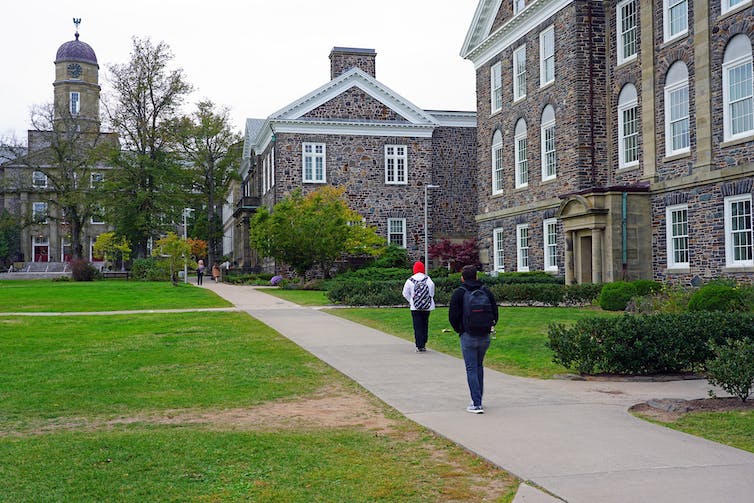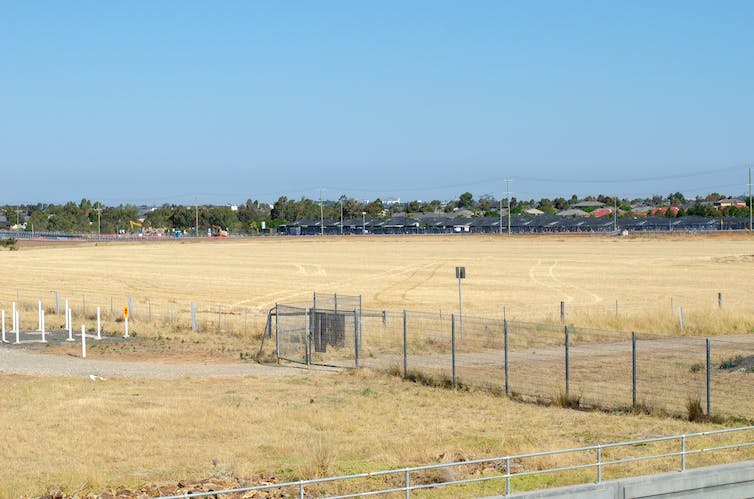Recent op-eds about Canadian copyright law call on the Canadian government to stop allowing uncompensated copying in education.
At the end of May, an op-ed in The Globe and Mail described the current state of affairs regarding copyright and education as “the legalized robbery of Canadian authors by the education sector.”
This follows the ongoing “I Value Canadian Stories” campaign, by a coalition of more than 20 publishing, writerly and creative associations, which calls on the federal government to “restore fair compensation to creators and publishers for the use of their works by the education sector.”
As researchers with expertise in copyright and universities, we think the tone of this discourse is misleading. It’s also potentially harmful to a broader discussion of the important role that copyright exceptions serve within education and society at large.
Decline in author incomes
Authors and publishers trace the decline in author incomes back to a specific addition to the Copyright Act in 2012 that added “education” as a purpose under the fair dealing exception.
What is fair dealing in copyright? Here’s why it matters when moving classes online due to coronavirus
Fair dealing protects the right to research, private study, education, parody, satire, criticism, review and news reporting. Fair dealing is not illegal — the ability for users to make copies for specific purposes is an integral part of the Canadian Copyright Act.
When universities do use fair dealing in a small number of situations to supplement purchased, licensed and freely available resources, they are working within guidelines developed across the post-secondary and kindergarten to Grade 12 sectors.
(Shutterstock)
Shifting licensing relationships
Prior to 2012, most post-secondary institutions paid Access Copyright for the right to copy and distribute articles and chapters to students. Access Copyright is an organization that collects copying fees from institutions, like schools and governments, on behalf of authors.
It’s true that during the early part of the 2010s many post-secondary institutions decided not to renew their annual licences with Access Copyright. This certainly had an impact on the royalties higher education institutions passed along to authors.
For many institutions, including the University of British Columbia, the University of Alberta and Dalhousie University, the initial decision to step away from the Access Copyright licence preceded any changes to the Copyright Act. It was informed by the diminishing value of the licence and the technological changes happening in the publishing sector.
For a long time, the Access Copyright licence served the needs of the university community. However, in a changing landscape of digital disruption and acquisition models, it became less valuable. Libraries make decisions all the time about how they purchase and license materials, responding to the value of different products and services on the market.
Digital disruption
The Access Copyright licence, which only covered physical photocopies of up to 20 per cent of a work in 2011, no longer made sense given the growing impacts of digital disruption. A shift from print to digital materials was happening in many sectors at this time.
University libraries were increasingly paying publishers for online access to materials. These licence agreements included unlimited digital access to many articles and books universities had already been paying Access Copyright for the right to use. This access reduced the need to make copies of materials for teaching and learning.

(Shutterstock)
This shift to digital purchasing and access also impacted how instructors assigned readings. Instead of each student being asked to purchase a textbook or course pack of photocopied and bundled readings, instructors could share a digital syllabus with links to library-licensed readings.
Students would only have to enter in their library password and could have immediate access to assigned readings from any location.
How libraries buy materials
The shift towards digital access has increased the ability of universities to meet the needs of students and instructors, but has also changed the way libraries buy materials.
Universities now gain access and copying rights primarily through these digital licences. This significantly reduces the need to pay additional fees for copying, such as Access Copyright licence fees.
To supplement library materials, universities also pay publishers directly for use of specific materials that aren’t included in the licences. Increasingly, educators are also using freely available online materials such as YouTube videos.
Despite the variety of sources available for educational content today, universities continue to pay large amounts for library materials.
Creative writers affected
The types of authors that Access Copyright represents and those discussed in the opinion pieces above are primarily creative writers.
Only about two per cent of post-secondary library holdings are Canadian literature of the type that would be covered under an Access Copyright licence.
The vast majority of university courses do not assign work by creative writers.
Universities overwhelmingly purchase and use research and other non-creative materials created by scholars and students who receive no financial compensation for their writing.
Universities Canada’s submission to the Standing Committee on Industry, Science and Technology’s statutory review of Canada’s Copyright Act acknowledged changes in copyright and publishing industries. These shifts have happened while university funding models are also changing.
The submission to the standing committee proposed two solutions for remunerating writers affected by a loss of royalties: increased funding in the Canada Book Fund and including university libraries’ Canadian literature in Canada’s Public Lending Right program. This program issues annual payments to authors according to the frequency with which their books appear in Canadian public libraries.
Fair dealing’s value to society
Fair dealing exists for all Canadians and empowers individuals to access information, critique institutions, educate themselves, create new cultural products, innovate on technology and more.
Education can include any kind of instruction, formal or otherwise — the impact of removing education from fair dealing would go far beyond universities. For example, a community organization might share an article about a key issue with its staff and volunteers in a training session.
Fair dealing is not a copyright loophole that facilitates robbery, it is an essential part of the Copyright Act and has been defended in Canada by the courts at the highest level.




